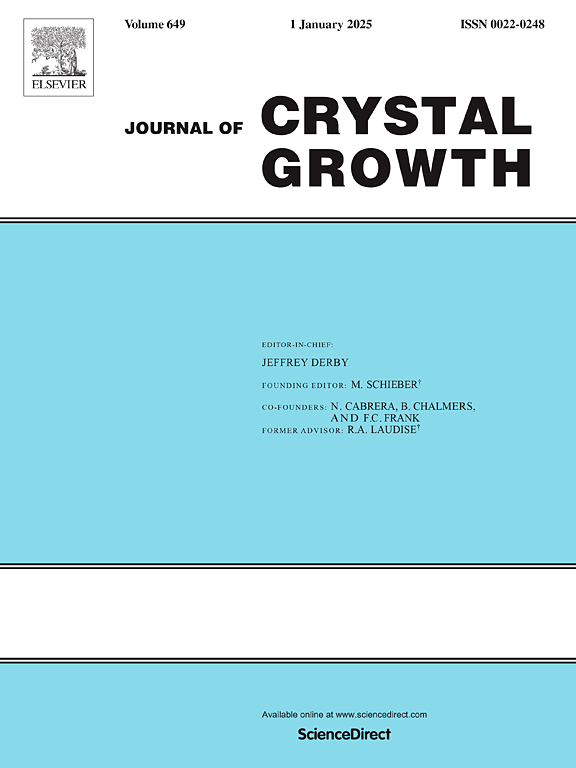Controlled synthesis of calcium formate from biological aragonite
IF 1.7
4区 材料科学
Q3 CRYSTALLOGRAPHY
引用次数: 0
Abstract
Calcium formate is an important chemical compound with multiple uses. However, the current preparation method of calcium formate mainly uses calcium carbonate/calcium hydroxide as raw material. It is short of precise synthesis of crystalline calcium formate. In this study, we proposed a controlled method for the synthesis of β-calcium formate by using the biologicalaragonite shell. This method only uses biological aragonite and formic acid as raw materials, without other additives, to synthesize β-calcium formate crystals with regular octahedral morphology. The morphology, composition, structure and thermal stability of the calcium formate material were characterized by scanning electron microscopy (SEM), X-ray diffraction (XRD) and thermal analysis, respectively. The thermodynamic properties of β-calcium formate crystals and α-calcium formate crystals were compared and analyzed by first-principles calculations. The reasons why can synthesis of β-calcium formate crystals compared with the common α-calcium formate were discussed in combination with experimental and theoretical calculation data, which provides an important reference for the precise synthesis and preparation of polycrystalline calcium formate in the future.
生物文石可控合成甲酸钙的研究
甲酸钙是一种具有多种用途的重要化合物。而目前甲酸钙的制备方法主要以碳酸钙/氢氧化钙为原料。目前还缺乏精确合成结晶甲酸钙的方法。本研究提出了一种利用生物文石壳合成β-甲酸钙的可控方法。该方法仅以生物文石和甲酸为原料,无需其他添加剂,即可合成具有正八面体形态的β-甲酸钙晶体。采用扫描电镜(SEM)、x射线衍射(XRD)和热分析对甲酸钙材料的形貌、组成、结构和热稳定性进行了表征。用第一性原理计算对β-甲酸钙晶体和α-甲酸钙晶体的热力学性质进行了比较和分析。结合实验和理论计算数据,探讨了β-甲酸钙晶体相对于常见的α-甲酸钙晶体能够合成的原因,为今后精确合成和制备多晶甲酸钙提供了重要参考。
本文章由计算机程序翻译,如有差异,请以英文原文为准。
求助全文
约1分钟内获得全文
求助全文
来源期刊

Journal of Crystal Growth
化学-晶体学
CiteScore
3.60
自引率
11.10%
发文量
373
审稿时长
65 days
期刊介绍:
The journal offers a common reference and publication source for workers engaged in research on the experimental and theoretical aspects of crystal growth and its applications, e.g. in devices. Experimental and theoretical contributions are published in the following fields: theory of nucleation and growth, molecular kinetics and transport phenomena, crystallization in viscous media such as polymers and glasses; crystal growth of metals, minerals, semiconductors, superconductors, magnetics, inorganic, organic and biological substances in bulk or as thin films; molecular beam epitaxy, chemical vapor deposition, growth of III-V and II-VI and other semiconductors; characterization of single crystals by physical and chemical methods; apparatus, instrumentation and techniques for crystal growth, and purification methods; multilayer heterostructures and their characterisation with an emphasis on crystal growth and epitaxial aspects of electronic materials. A special feature of the journal is the periodic inclusion of proceedings of symposia and conferences on relevant aspects of crystal growth.
 求助内容:
求助内容: 应助结果提醒方式:
应助结果提醒方式:


